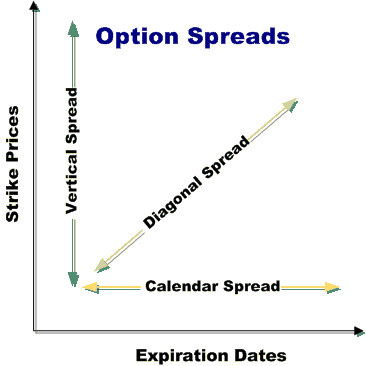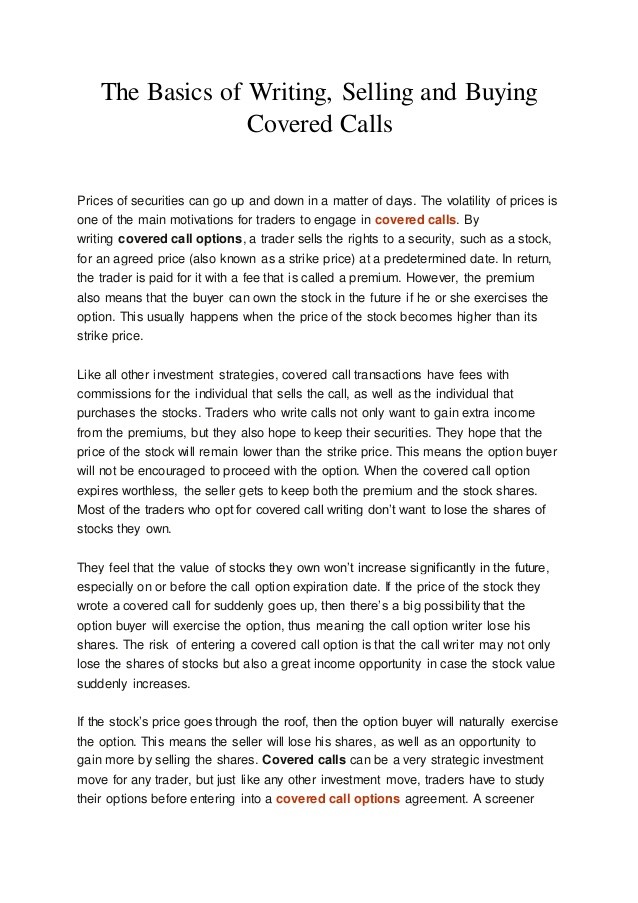Covered Calls_1
Post on: 23 Апрель, 2015 No Comment

Writing or selling Covered Calls are a moderate investor’s favorite strategy. It’s so conservative that some retirement funds allow this strategy in their portfolio. It works particularly well when the stock in question doesn’t move dramatically up or down, but rather just trends sideways. Basically, it works for stocks that are deemed too boring for option plays.
There are two main reasons for writing covered calls. The first is to provide monthly income on stocks that you already own but are not moving much. The act of writing the call will generate income from earning the option premium, and this can be repeated every month if the underlying stock price does not move. The second reason is to increase the loss tolerance of the underlying stock. Since you earn the option premium when writing the call, the stock price will not need to go as high in order for your investment to break even or reach a target profit.
When you are Writing or Selling stock options, you are agreeing to the obligation to fulfill the option contract, which is to sell stock in the case of a Call. or to buy stock in the case of a Put .
When you buy an option, you buy the option to Open a Position, and sell it later on to Close the Position. Similarly, when you Write options, you write the option to Open the Position, and you must Close the Position somehow, whether it’s by letting the option expire worthless, or by buying the option back.
In the case of selling Call options, remember that Call options are more In-The-Money the higher the stock price goes. So if you sell a Call option and the underlying stock price goes down below the option’s strike price (meaning the option becomes Out-Of-The-Money), the option will expire worthless. You therefore don’t need to do a thing, and can pocket the profit you earned by selling the option.
However, the danger happens when the stock price keeps climbing. If it keeps going up, it will never become worthless, and come expiration day, someone is going to exercise the option and buy the stock from you. You will therefore be Called Out .
The problem is you don’t own the stock. You would need to buy the stock at the current market price (which has gone up), and sell the stock to the option buyer at the previously agreed strike price, which would have been lower. This would cost you a lot!

Let’s take a look at a numerical example:
Say the price of stock ABC is now sitting at $18. You sell a Call option for a strike price of $20, expecting the stock to hover around the $18 level. Let’s say you earned $1.00 on the option premium (which is $2 Out-Of-The-Money).
Scenario 1. If by expiration day the stock price ends up at $19, which is below the strike price of $20, you’re fine, since the option is Out-Of-The-Money and will expire worthless.
Scenario 2. What if by expiration day the stock price jumps to $26? The option is now In-The-Money by $6, and you have been Called Out. So you will need to buy the stock at the current market value of $26, then sell it to the option buyer at $20. That’s a loss of $6 for you, and if you include the $1.00 you made earlier, still results in a nett loss of $5.00.
Let’s look at this in tabular format:














